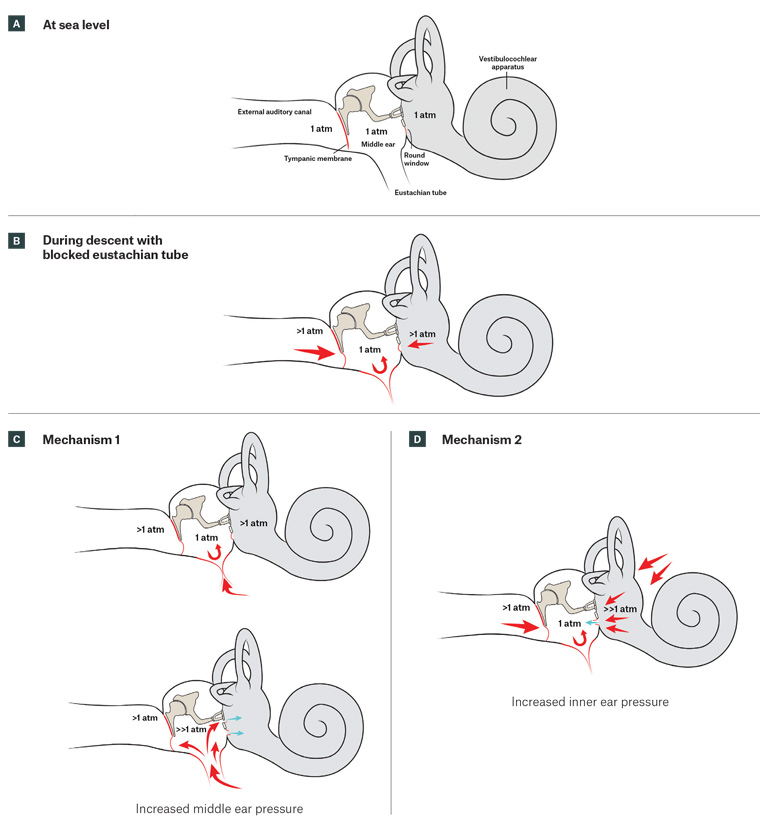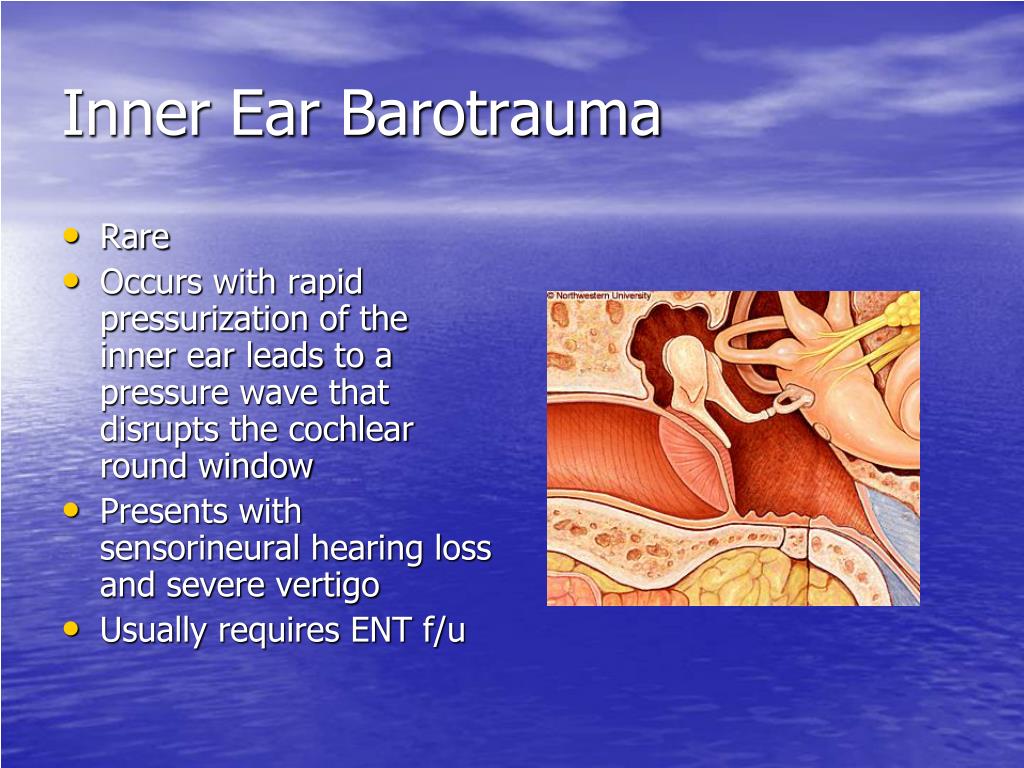
Due to the density of water, pressure during a dive increases one additional 1 Atm for every 33 feet of seawater depth. Both of these measurements are equivalent to one atmosphere (1 Atm or 1 Barr). This is also measured in millimeters of mercury as 760mmHg. Atmospheric pressure at mean sea level is 14.7 psi. Similarly, the compressed air held in a diver’s lung, if he holds his breath, will expand as the surrounding water pressure decreases on the ascent. A balloon that rises in the atmosphere will expand in volume as the ambient pressure decreases.
When you yawn, chew, or swallow air flows up the Eustachian tube, so suck on a piece of candy or chew some gum while the plane is changing altitudes.According to Boyle’s Law of Gases, if the temperature of a gas is held constant, there is an inverse relationship between the volume of the gas and its pressure. These earplugs are cheap and reusable, and can be found in many pharmacies and at airports. :max_bytes(150000):strip_icc()/ear-diagram-57bf237f3df78cc16e1dfa27.jpg)
Some people find air pressure-regulating earplugs to be helpful when they fly, as they help slow down the rate of air pressure change.Do this maneuver until you feel your ears pop, and repeat as necessary. To perform this, breathe in and then blow out gently while pinching your nose and keeping your mouth closed. Both divers and airplane passengers can do the Valsalva maneuver whenever they feel any discomfort in their ears.
 If you are going scuba diving, make sure you give adequate time for the air pressure to equalize on both sides of the eardrum by descending and ascending slowly. Using a decongestant can help open the Eustachian tubes and dry up the mucus in your nose. If you are congested and you have to fly, use a decongestant nasal spray or drops 30 minutes to an hour before ascent and descent. If you can, avoid diving or flying until the infection is cleared or you have control over your allergies. If you have allergies or an infection affecting your nose and throat, you may experience increased discomfort when you dive or fly in a plane. If you are looking for some ways to prevent ear pain, check out these helpful ear barotrauma tips. So how can you prevent ear pain when you go scuba diving or when you fly? Luckily, there are some simple ways to help prevent ear barotrauma, aka airplane ear. Occasionally, the eardrum can tear, but this usually heals by itself in several weeks. Luckily, while the pain can be severe, in most cases there is no severe damage done to the ear. However, for scuba divers and airplane passengers, air pressure outside the ear can increase quickly which then pushes the eardrum inward, causing ear pain and potentially dulled hearing. The Eustachian tube connects the back of the nose to the middle ear, so when the outside air pressure changes suddenly, air will run through the tube to equalize the pressure. Usually, the Eustachian tube allows outside air to enter the middle ear to help maintain equal pressure on both sides of the eardrum. Your eardrum is what separates the middle ear and the ear canal, but when the air pressure changes rapidly or becomes unequal outside the eardrum and in the middle ear, this can damage your eardrum.
If you are going scuba diving, make sure you give adequate time for the air pressure to equalize on both sides of the eardrum by descending and ascending slowly. Using a decongestant can help open the Eustachian tubes and dry up the mucus in your nose. If you are congested and you have to fly, use a decongestant nasal spray or drops 30 minutes to an hour before ascent and descent. If you can, avoid diving or flying until the infection is cleared or you have control over your allergies. If you have allergies or an infection affecting your nose and throat, you may experience increased discomfort when you dive or fly in a plane. If you are looking for some ways to prevent ear pain, check out these helpful ear barotrauma tips. So how can you prevent ear pain when you go scuba diving or when you fly? Luckily, there are some simple ways to help prevent ear barotrauma, aka airplane ear. Occasionally, the eardrum can tear, but this usually heals by itself in several weeks. Luckily, while the pain can be severe, in most cases there is no severe damage done to the ear. However, for scuba divers and airplane passengers, air pressure outside the ear can increase quickly which then pushes the eardrum inward, causing ear pain and potentially dulled hearing. The Eustachian tube connects the back of the nose to the middle ear, so when the outside air pressure changes suddenly, air will run through the tube to equalize the pressure. Usually, the Eustachian tube allows outside air to enter the middle ear to help maintain equal pressure on both sides of the eardrum. Your eardrum is what separates the middle ear and the ear canal, but when the air pressure changes rapidly or becomes unequal outside the eardrum and in the middle ear, this can damage your eardrum. 
Typically, this condition is often experienced by scuba divers, but it also commonly happens while riding on an airplane, particularly when the plane is ascending and descending.įor your eardrum to function correctly, there needs to be equal air pressure on both sides of the eardrum.

Barotrauma is a condition that can be painful and can even lead to dulled hearing and tinnitus. When the eardrum becomes stretched and tense, barotrauma of the ear occurs due to the unequal pressure that develops on either side of the eardrum and can affect the inner, middle, and outer ear.


:max_bytes(150000):strip_icc()/ear-diagram-57bf237f3df78cc16e1dfa27.jpg)





 0 kommentar(er)
0 kommentar(er)
